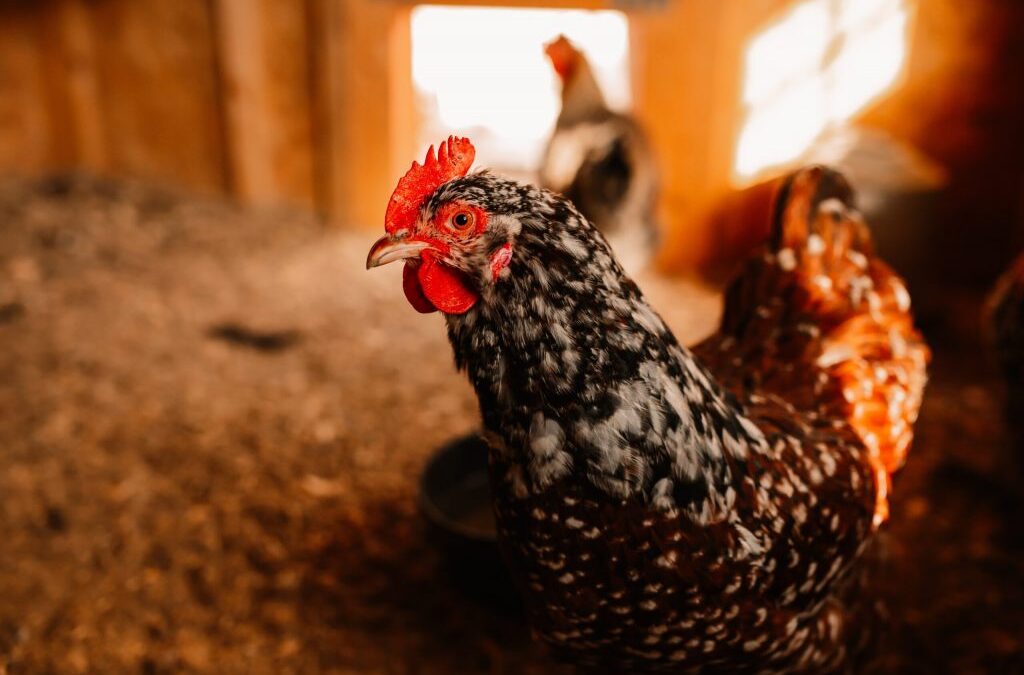The COVID-19 pandemic underscored the devastating potential of zoonotic diseases—pathogens that jump from animals to humans. With ongoing seasonal surges, Rapid Home Tests are a vital tool for staying healthy and protecting your family and loved ones. Stock your home medicine cabinet this season with market-leading ASSURE-100 rapid tests.
With continued reports of novel coronaviruses and avian influenza strains circulating in animal populations, scientists remain vigilant about the next potential pandemic. This article explores the risks associated with zoonotic spillover, the likelihood of emerging coronaviruses or avian flu strains causing a global outbreak, and the role of early detection methods, including rapid COVID testing, in mitigating future threats.
How Do Viruses Jump to Humans?
The transmission of viruses from animals to humans—known as zoonotic spillover—occurs through various mechanisms, including:
- Close Contact with Infected Animals: Farmers, hunters, and individuals working in live animal markets face increased exposure.
- Consumption of Contaminated Animal Products: Poorly regulated food handling practices can introduce pathogens into human populations.
- Environmental Exposure: Viruses present in animal waste or respiratory secretions can contaminate water, soil, or air.
Spillover events are more likely when these interactions increase due to habitat destruction, wildlife trade, or intensive farming practices.
Coronaviruses: Ongoing Risks Beyond COVID-19
Past and Present Coronavirus Threats
Coronaviruses are a diverse group of viruses, some of which have already demonstrated the ability to infect humans:
- SARS-CoV (2002–2003): Originated in bats and spread through civet cats before infecting humans, resulting in over 8,000 cases and nearly 800 deaths.
- MERS-CoV (2012–Present): Emerged in the Middle East, transmitted from camels to humans, with a fatality rate of approximately 35 percent.
- SARS-CoV-2 (2019–Present): The cause of COVID-19, likely originating in bats, with ongoing mutations leading to variants like Omicron and XBB.
Emerging Coronaviruses
Recent surveillance has identified novel coronaviruses circulating in bats and other wildlife, some of which have genetic markers indicating potential human adaptation. The ability of these viruses to mutate rapidly raises concerns about future spillover events.
Avian Influenza: A Growing Concern
H5N1 and Other High-Pathogenic Strains
Avian influenza viruses, particularly H5N1, H7N9, and H5N8, have caused sporadic outbreaks in humans, often with severe outcomes:
- H5N1: A highly fatal strain with over 50 percent mortality in documented human cases.
- H7N9: Responsible for severe outbreaks in China, leading to a mortality rate of approximately 40 percent.
- H5N8: Detected in birds globally, with isolated human cases raising alarms about its pandemic potential.
Recent Developments
According to the Centers for Disease Control and Prevention (CDC), 2024 has seen an increase in avian flu detections among poultry and wild birds, heightening the risk of human exposure. While human-to-human transmission remains rare, mutations could enable these viruses to spread more efficiently, setting the stage for another pandemic.
Factors Increasing the Risk of Another Pandemic
- Wildlife-Human Interactions: Deforestation, urban expansion, and illegal wildlife trade create more opportunities for zoonotic spillover.
- Intensive Livestock Farming: High-density poultry and pig farms serve as breeding grounds for novel viral mutations.
- Climate Change: Rising temperatures and shifting ecosystems contribute to changes in virus-host dynamics, increasing transmission potential.
- Global Travel and Trade: Rapid human movement can facilitate the spread of newly emerging viruses before containment measures are enacted.
Mitigating the Risk: Early Detection and Surveillance
Strengthening Surveillance Programs
Public health agencies are intensifying efforts to monitor zoonotic viruses through:
- Genomic Sequencing: Tracking mutations in circulating coronaviruses and avian flu strains.
- Wildlife Monitoring: Studying bat populations and migratory birds for early warning signs.
- One Health Approach: Integrating human, animal, and environmental health strategies to prevent spillovers.
The Role of Rapid Testing in Outbreak Control
Rapid diagnostic tools are critical for identifying and containing new infectious diseases. The use of rapid COVID tests has demonstrated the importance of widespread, accessible testing during pandemics. Moving forward, expanding rapid testing capabilities for coronaviruses and avian flu strains will help:
- Detect early cases before widespread transmission occurs.
- Differentiate between multiple respiratory pathogens for accurate treatment.
- Enable faster quarantine measures to contain outbreaks.
What Can Individuals Do to Stay Safe?
Stay Informed
Monitoring updates from the CDC, World Health Organization (WHO), and other public health agencies ensures awareness of emerging threats.
Practice Safe Hygiene
- Wash hands frequently and avoid contact with sick animals.
- Cook poultry and meat thoroughly to eliminate viral pathogens.
- Wear masks in high-risk settings, such as live animal markets or farms.
Get Vaccinated
Annual flu vaccinations help reduce the risk of severe illness from circulating influenza strains. Scientists are also developing universal flu vaccines and pan-coronavirus vaccines to provide broader protection against future threats.
Looking Ahead: Preparing for the Next Pandemic
While the COVID-19 pandemic highlighted the vulnerabilities in global health systems, it also accelerated advancements in diagnostics, surveillance, and vaccine development. By strengthening pandemic preparedness efforts, improving early detection tools like rapid COVID testing, and fostering global cooperation, we can reduce the likelihood of another devastating outbreak.
The threat of new pandemics from coronaviruses or avian flu remains an ongoing concern. With increasing human-animal interactions and evolving viruses, proactive surveillance and early detection are essential to mitigating risks. By staying informed, utilizing preventive measures, and supporting research initiatives, individuals and health professionals can contribute to global pandemic preparedness efforts.
With ongoing seasonal surges, Rapid Home Tests are a vital tool for staying healthy and protecting your family and loved ones. Stock your home medicine cabinet this season with market-leading ASSURE-100 rapid tests.
- Keywords: pandemic risks, zoonotic viruses, COVID-19, SARS-CoV-2, avian flu, rapid testing, rapid home tests, emerging diseases, virus spillover
February 6, 2025
Oceanit

